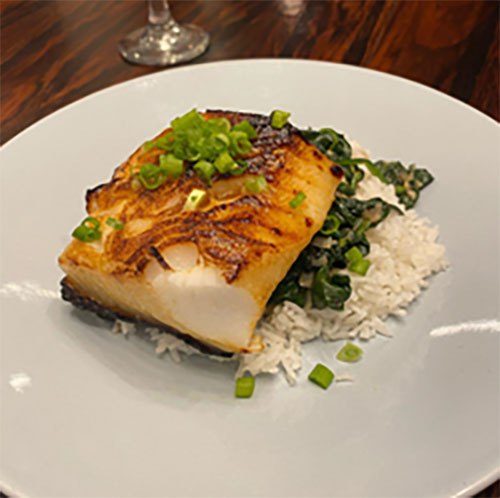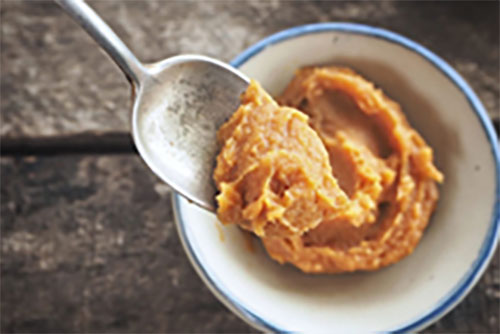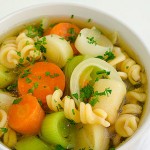Miso-Glazed Chilean Sea Bass is easily one of the best seafood dishes on the planet. The buttery fish with flavourful miso are a match made in heaven, and it’s a meal you’re going to want to make every week.
This is a signature dish at one of the top Las Vegas restaurants – TAO. Foodies flock to this spot to have a taste of this exquisite dish. If you’re not in Vegas but still want to enjoy some fine cuisine, you’ll be happy to find the recipe here!

What is Chilean sea bass?
Chilean sea bass might be unfamiliar to some, as the actual name for the fish is Patagonian toothfish. It’s a close relative to the Antarctic toothfish, and both are marketed under the name Chilean sea bass.
A fish wholesaler named Lee Lantz renamed the toothfish the Chilean sea bass in 1977 to make it more attractive to consumers. This worked, and it’s now sold in restaurants across the globe.
If you can’t source Chilean sea bass (It’s most common in the United States and Canada) there are alternatives. The best option is sablefish, also known as black cod. It has large flakes when cooked, a firm texture, and a buttery taste.
What is miso paste?
Miso is a paste made from fermented soybeans. The beans are mixed with salt and koji – a mold used in the fermentation process. They are then left to ferment for a couple of months up to one to two years. The longer the ferment, the bolder and more complex the flavor.
There are three main types of miso. White miso is the mildest form of the paste; red miso has been left to ferment for much longer and is much more robust, and then theres a mix of the two types.
You can also make different kinds of miso using other base ingredients. Kome miso is miso that uses white rice instead of soybeans and is very popular in Japan. Genmai miso uses brown rice and has a very unique and singular flavor.
Mugi miso is made from barley grain and is fermented for a very long time. Mame miso is a variation of regular miso, but you add a small amount of barley grain to the mixture. Soba miso is miso with buckwheat added. It isn’t a popular choice and has the same flavor as other buckwheat products like soba noodles.

Miso paste recipe
Miso paste will take about two days to make before you can leave it to ferment.
- The first step is to cut and soak 500g of soybeans for 18 hours. This step is essential, and cutting the time short won’t give you the best results.
- On day 2, pressure cook your soybeans for 20 minutes until soft and then let them simmer for 3 to 4 hours.
- Mash your soybeans, and then add in the salt and 250g of koji rice. The amount of salt you add is 10% of the weight of your soybeans, which would be about 50g
- Pack a jar with your mixture, and then leave it to ferment for six months.
Miso-glazed Chilean sea bass recipe
The recipe for making miso-glazed Chilean Sea Bass is much simpler than you would imagine, considering how good the dish is.
Ingredients
- ⅓ cup saké
- ⅓ cup mirin
- 3 tablespoons soy sauce
- ¼ cup brown sugar
- ¼ cup miso paste
- 4 1-inch thick sea bass fillets
- 2 tablespoons chopped green onion
Side:
- Broccoli
- Bok Choy
- Garlic
Makes 4
Recipe
- Mix thesaké, mirin, soy sauce, miso paste, and brown sugar in a bowl. Place the fillets in a sealable bag, and pour the marinade over them. Leave the fish to marinate for 3 to 6 hours in the fridge.
- After the fish has marinated, put the fillets onto a baking sheet and place them in your preheated oven, which should be at 200℃. Let the fish cook for 7 to 9 minutes, or until cooked all the way through and slightly flakey.
- For the wok vegetables, a dash of oil and a teaspoon of garlic can be added to the pan. Toss in a handful of broccoli and bok choy and quickly stir fry.
As you can see, making this world-famous dish isn’t as difficult as you might think. It just takes a little bit of patience (and possibly a lot of patience if you plan on making your own miso paste.) Either way, it is absolutely delicious and well worth the effort.








Leave a Reply